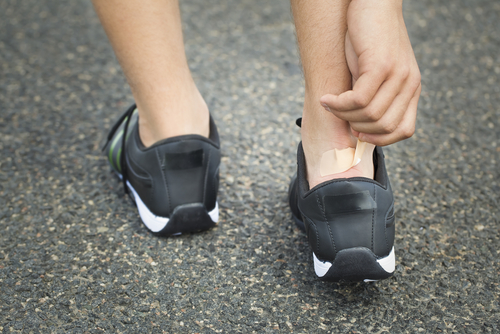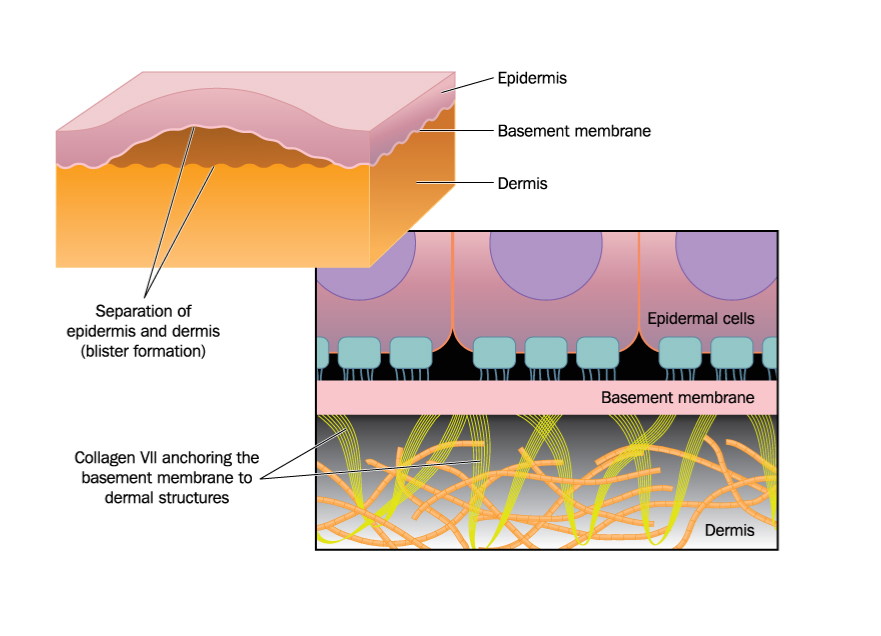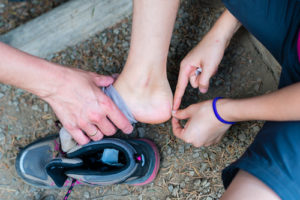
Friction – i.e. Blisters
Some of you runners may be familiar with the picture of running a long distance during a race and then starting to feel sharp stinging sensations in your feet. Sometimes the pain can be so severe, you have to stop for a bit, which can be frustrating because it slows you down. I have personally volunteered in medical tents during races and had to treat some pretty painful blisters. So why do some runners get bad blisters and others don’t? What causes them, how do you treat them, and how can you prevent them from occurring?
What Actually Causes Blisters?
Running events are the perfect environment for blisters. When people are running, the heat and activity cause their feet to start swelling in their sneakers. Moisture inside the sneaker also begins to build up from the sweat. In addition, sometimes sneakers and socks can get wet at the water stations. This causes even more moisture and increased friction in the shoes. Fluid can then build up in the area where the sock rubs against the skin. Shoes that fit poorly, such as too tight or too loose, causes excessive movement within the shoe. Running at a faster pace can also increase the chances of blister formation. Finally, people with boney prominences such as bunions or hammertoes are at an increased risk of developing blisters in those areas of their feet.
So what actually occurs when a blister forms? A tear occurs between the epidermis and the dermal layers of the skin. The forces moving the foot forward and side to side when running, called shear forces, combined with pressure and sweat, all contribute to tearing of the skin. This then generates a cleft that fills with blister fluid. A blood blister can form when the friction force ruptures tiny blood vessels beneath the dermis. Friction blisters can also become secondarily infected if they are not treated properly. 
What Are The Treatment Options For Blisters?
There are several treatment options for blisters depending on severity. Simply leaving it alone if it is not painful will allow the blister to pop and skin to heal on its own. Soaking in Epsom salt and warm water will provide relief as well. Puncturing the blister with a sterilized needle and preserving the top of the blister can relieve the pain. However be careful, as if you take the roof of a newly formed blister off, you may experience more pain and be more at risk for an infection. Antibiotic ointment and a gauze dressing with elastic compression will help heal the blister site. A hydrocolloid dressing (2nd Skin or DuoDERM®) may be used temporarily to protect the injured skin if the injury occurs during a race, but it is not recommended to keep it on long-term because it can increase wetness and friction over time.
For severe blisters, or if you form a blister under the nail, be sure to consult a professional. Also, people who may be immunocompromised or have Diabetes should have a professional treat blisters to prevent infection. For those of you who are local to our area, definitely contact our office for evaluation if you have any concerns about the look of your skin or if it appears to be getting worse. For those outside of our area, be sure to contact your local medical professional for evaluation.
How Do I Prevent Blisters From Forming?
Make sure your shoes and socks fit properly! I generally always run with slick skin by lightly applying an anti-chafing stick, such as Glide, to help. Socks that wick moisture away such as acrylic, nylon, or polyester are great for blister prevention. I would definitely avoid 100% cotton socks because they tend to absorb moisture, making one more prone to blisters. Some runners run with double socks, so the friction will occur in between the layers of socks, rather than in between the foot and the sock.

Additional Information
This article is part of our Discussion Series On Running Related Injuries. If you’re interested in learning even more about blisters or other running related injuries, please make a comment below, or feel free to contact us with questions. If you would like to see Dr. Caruso, please schedule an appointment here.